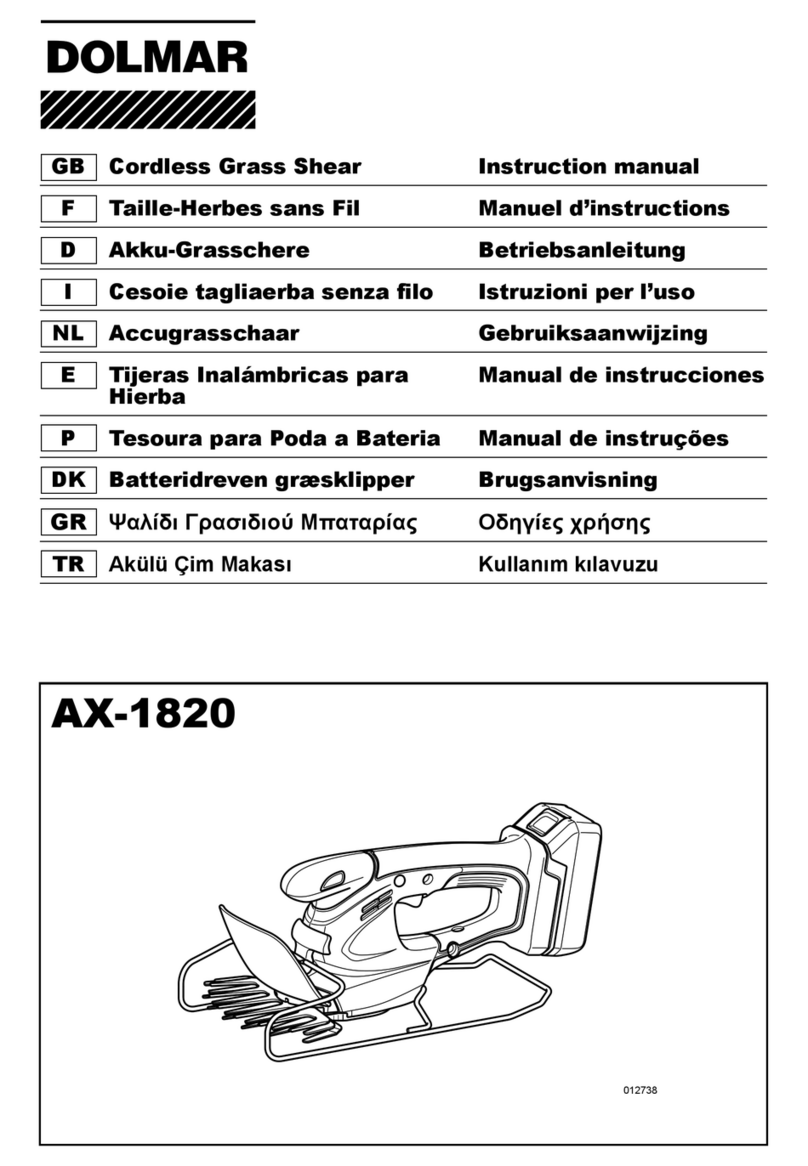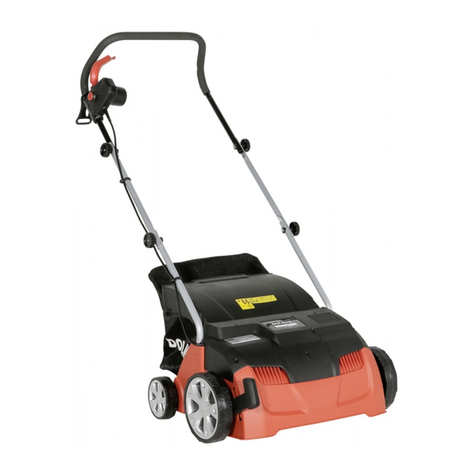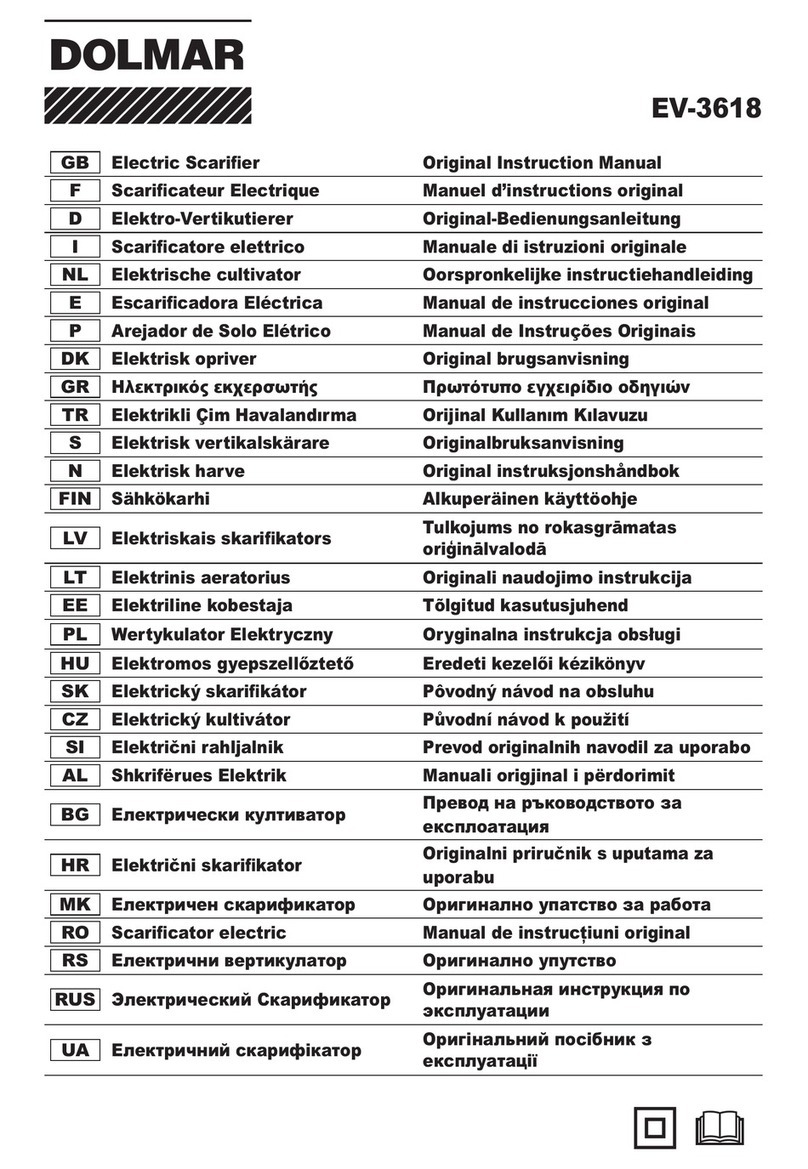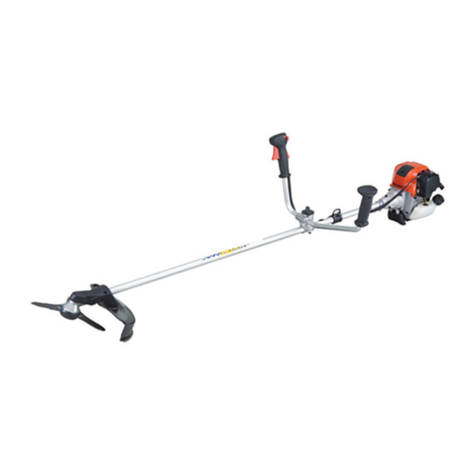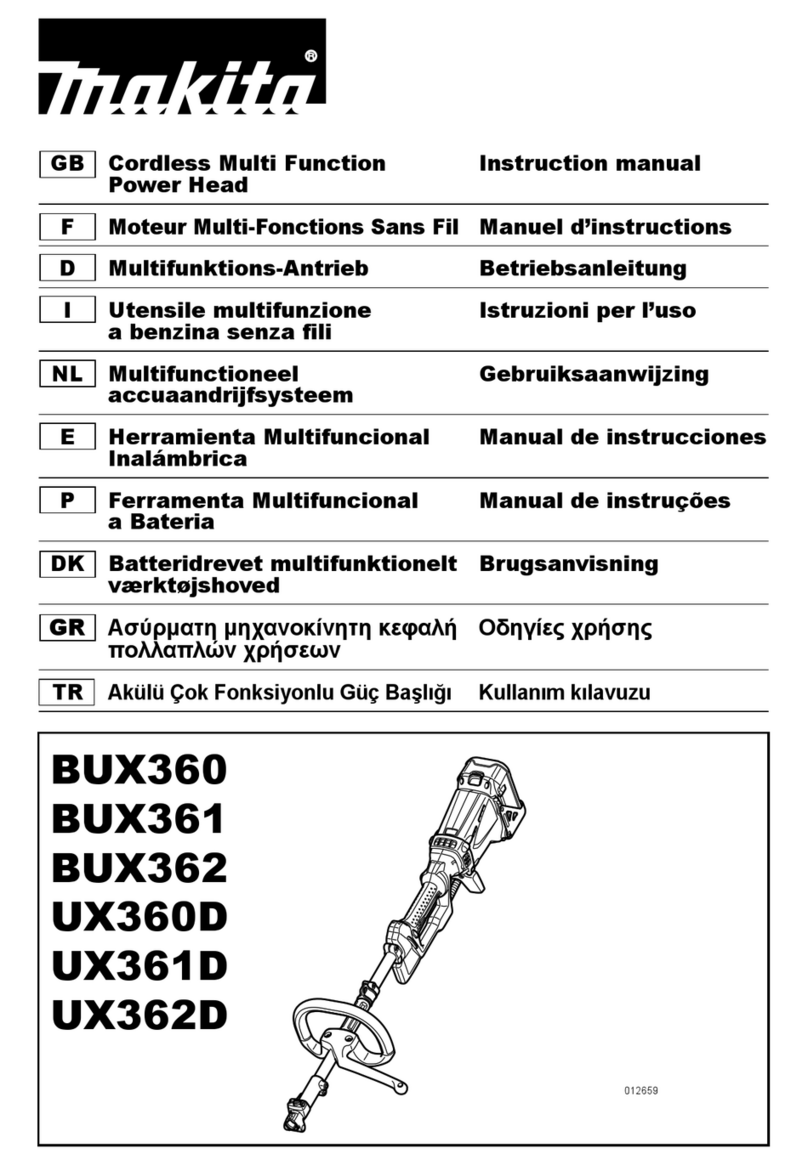
9
2. Wear eye protection and stout shoes at all times
while operating the machine.
3. Always wear substantial footwear and long
trousers while operating the machine,
Electrical and battery safety
1. Avoid dangerous environment. Don't use the
equipment in damp or wet locations or expose it
to rain. Water entering an equipment will increase
the risk of electric shock.
2. Recharge only with the charger specified by the
manufacturer. A charger that is suitable for one
type of battery pack may create a risk of fire when
used with another battery pack.
3. Use power tools only with specifically designated
battery packs. Use of any other battery packs
may create a risk of injury and fire.
4. When battery pack is not in use, keep it away
from other metal objects, like paper clips, coins,
keys, nails, screws or other small metal objects,
that can make a connection from one terminal to
another. Shorting the battery terminals together
may cause burns or a fire.
5. Under abusive conditions, liquid may be ejected
from the battery; avoid contact. If contact
accidentally occurs, flush with water. If liquid
contacts eyes, additionally seek medical help.
Liquid ejected from the battery may cause
irritation or burns.
6. Do not dispose of the battery(ies) in a fire. The
cell may explode. Check with local codes for
possible special disposal instructions.
7. Do not open or mutilate the battery(ies).
Released electrolyte is corrosive and may cause
damage to the eyes or skin. It may be toxic if
swallowed.
Starting up the equipment
1. Make sure that there are no children or other
people nearby, also pay attention to any animals
in the working vicinity. Otherwise stop using the
equipment.
2. Before use always check that the equipment is
safe for operation. Check the security of the
cutting tool and the guard and the switch
trigger/lever for easy and proper action. Check for
clean and dry handles and test the function of the
start/stop.
3. Check damaged parts before further use of the
equipment. A guard or other part that is damaged
should be carefully checked to determine that it
will operate properly and perform its intended
function. Check for alignment of moving parts,
binding of moving parts, breakage of parts,
mounting, and any other condition that may affect
its operation. A guard or other part that is
damaged should be properly repaired or replaced
by our authorized service center unless indicated
elsewhere in this manual.
4. Switch on the motor only when the hands and
feet are away from the cutting tool.
5. Before starting make sure that the cutting tool has
no contact with any objects.
Method of operation
1. Only use the equipment in good light and visibility.
During the winter season beware of slippery or
wet areas, ice and snow (risk of slipping). Always
ensure a safe footing on slopes and be sure to
walk and never run.
2. Take care against injury to feet and hands from
the cutting tool.
3. Never stand on a ladder and run the equipment.
4. Never climb up into trees to perform cutting
operation with the equipment.
5. Never work on unstable surfaces.
6. Remove sand, stones, nails etc. found within the
working range. Foreign particles may damage the
cutting tool and can cause dangerous kick-backs.
7. Should the cutting tool hit stones or other hard
objects, immediately switch off the motor and
inspect the cutting tool.
8. Inspect the cutting tool at short regular intervals
for damage (detection of hairline cracks by
means of tapping-noise test).
9. Before commencing cutting, the cutting tool must
have reached full working speed.
10. The cutting tool has to be equipped with the
appropriate guard. Never run the equipment with
damaged guards or without guards in place!
11.
All protective installations and guards supplied
with the equipment must be used during operation.
12. Always remove the battery cartridge from the
equipment:
−whenever leaving the equipment unattended;
−before clearing a blockage;
−before checking, cleaning or working on the
equipment;
−after striking a foreign object;
−whenever the equipment starts vibrating
abnormally.
13. Always ensure that the ventilation openings are
kept clear of debris.
14. Cutting means continues to run after the motor is
switched off.
Cutting Tools
1. Employ only the correct cutting tool for the job in
hand.
Maintenance instructions
1. The condition of the equipment, in particular of
the cutting tool of the protective devices must be
checked before commencing work.
2. Turn off the motor and remove the battery
cartridge before carrying out maintenance,
replacing cutting tools or cleaning the equipment
or cutting tool.
